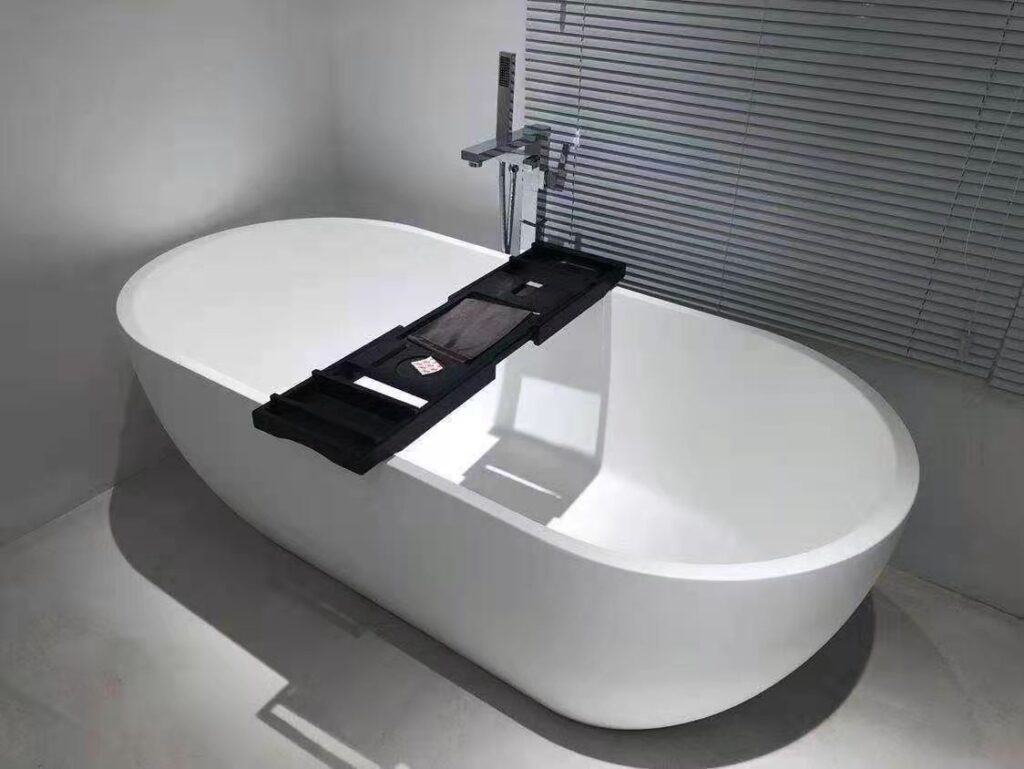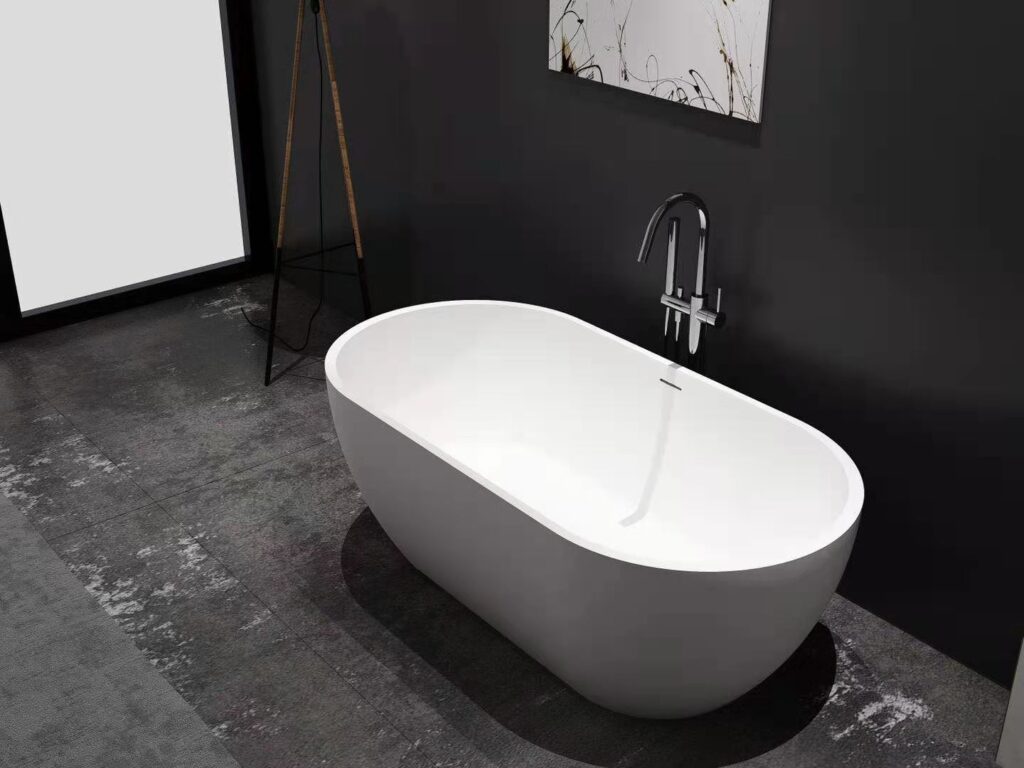When I started renovating my bathroom, I had a clear vision in mind: I wanted a space that felt like a private spa, blending elegance, comfort, and practicality. After weeks of research and countless visits to showrooms, I made three crucial decisions that completely transformed the look and feel of my bathroom — I chose a freestanding bathtub, high-quality basins, and stylish faucets that tied everything together.

Choosing the Right Freestanding Bathtub
A freestanding bathtub was the first item on my wishlist. Unlike traditional built-in tubs, a freestanding bathtub stands alone, making it the centerpiece of the room. I fell in love with its sculptural beauty and the sense of luxury it adds to any bathroom. Whether you’re going for a classic clawfoot design or a sleek modern silhouette, this type of bathtub commands attention.
What sold me was not just the look, but the comfort. The deep soaking depth allows for full-body immersion, perfect after a long day. I ended up choosing a solid surface tub with a matte white finish — not only is it easy to clean, but it also retains heat exceptionally well.
Matching Basins for a Cohesive Look
Once I had chosen the bathtub, it was time to pick basins that would complement the design. I opted for two countertop basins made of the same material as the tub — creating visual harmony in the space. The clean lines and minimalist design of the basins allowed the bathtub to remain the focal point, while still offering practical functionality for daily use.
One thing I didn’t expect was how much variety there is when it comes to bathroom basins. From vessel sinks to integrated solid surface options, there’s a style for every preference. My advice? Choose a basin that not only matches your aesthetic but also fits your lifestyle.
Faucets That Make a Statement
No bathroom is complete without high-quality faucets. I learned that faucets are not just functional; they’re a major style element. I went with a matte black finish for all the hardware — including the tub filler and basin faucets — to add contrast and a contemporary edge.
I also made sure to choose faucets that were easy to install and maintain. Since I have limited plumbing experience, I consulted a local installer to help me choose models with universal fittings and easy-clean features. Brands that offer ceramic disc valves, anti-drip features, and water-saving technology are worth the investment.
Installation Process – How I Installed My Freestanding Bathtub and Fixtures
Installing a freestanding bathtub was both exciting and intimidating. I quickly learned that proper preparation is key. Unlike drop-in tubs, freestanding models don’t need a frame or tiling, but they do require precise plumbing alignment.
The first step was to measure the space. I made sure to leave at least 15 cm (6 inches) of clearance around the tub for cleaning and visual balance. Then I inspected the floor strength — these bathtubs can be heavy, especially solid surface models filled with water. If you’re planning to install one on a second floor, reinforcement might be needed.
The plumbing was installed before the tub arrived. I used a freestanding tub filler faucet, which needed both hot and cold water supply lines from the floor. Installation took a few hours, but once the tub was in place and sealed, the result was stunning.
For the basins, the process was simpler. Since I chose countertop basins, I only needed to cut precise holes for drainage and faucets. I made sure to use a waterproof sealant around the edges to prevent moisture from seeping into the vanity top.
My advice? Always consult with a professional plumber unless you’re very experienced. Misalignment or improper sealing can lead to costly leaks or water damage.
Material Matters – How I Chose and Maintain My Bathtub, Basins, and Faucets
Material selection can make or break your bathroom’s long-term durability. For my bathtub, I opted for a solid surface freestanding tub. Solid surface not only offers a modern matte finish but also retains heat longer and is incredibly easy to clean. No yellowing over time, no porous surface — just a smooth, elegant look that lasts.
My basins were made from the same solid surface material. I love how cohesive it looks, especially when paired with matte or brushed faucets. Solid surface is also resistant to stains and scratches — a big plus for a busy household.
When it came to faucets, I learned to pay close attention to internal components. I chose faucets made from brass with ceramic disc cartridges — the gold standard for leak-free durability. Surface finishes matter too: matte black resists water spots better than chrome, while brushed nickel offers a warm, timeless feel.
To keep everything in top shape:
- I clean the bathtub weekly with a soft cloth and mild detergent — no harsh chemicals.
- The basins just need a quick rinse and wipe after daily use.
- For the faucets, I use a microfiber cloth to avoid scratches and buildup.
Style and Function – Creating a Cohesive Bathroom Design
I wanted my bathroom to feel like a curated space — not a random mix of parts. So I made sure that my freestanding bathtub, basins, and faucets shared visual and functional elements.
For instance:
- The bathtub’s curved silhouette echoed the soft round shape of the vessel basins.
- I chose the same color tone (matte white) for both the tub and basins, keeping the palette clean and minimal.
- My faucets were all from the same series — matte black with straight-line profiles, which contrasted beautifully against the white background.
Lighting also played a huge role. I installed a pendant light above the freestanding tub to make it a true centerpiece. Wall sconces flanked the mirrors above the basins, adding symmetry.
If you’re designing your bathroom, I recommend making one fixture the “star” — in my case, the freestanding bathtub — and building around it. This ensures visual balance and avoids overcrowding.
My Experience with Hungwaa and Other Recommended Brands
When researching brands, I discovered Hungwaa, a trusted manufacturer of modern freestanding bathtubs, solid surface basins, and faucets. Their reputation for quality and design instantly stood out. I reached out directly through their website and was impressed by the customer service and product variety.
The Hungwaa solid surface bathtub I chose has exceeded my expectations in both comfort and durability. It’s sleek, modern, and feels premium without the designer price tag. The matching basins are just as refined — well-finished and seamless. Their faucets offered the modern style I wanted, with high-quality materials and smooth operation.
Here are a few other brands I considered or recommend:
- Hungwaa – Best for design-forward, durable freestanding bathtubs and solid surface basins. Great for homeowners and designers looking for affordable luxury.
- Website: www.hungwaa.com
- Kohler – Known globally for elegant design and quality plumbing fixtures. Website: https://www.kohler.com/en
- Duravit – German-made, premium line of bathtubs and basins with minimalist aesthetics.
- Grohe – Excellent faucet brand offering innovative water-saving technologies.
- Victoria + Albert – High-end freestanding tubs made from volcanic limestone blends.

Final Thoughts – Building a Bathroom You’ll Love
Looking back, designing my dream bathroom was one of the most satisfying home improvement projects I’ve done. By choosing the right freestanding bathtub, matching basins, and well-crafted faucets, I created a personal retreat that feels luxurious every single day.
If you’re just starting your bathroom renovation, my advice is simple:
- Prioritize quality and timeless design.
- Choose materials that are easy to maintain.
- Make sure everything — from tub to faucet — speaks the same design language.
And of course, don’t overlook trusted brands like Hungwaa. Their commitment to craftsmanship, innovation, and customer care made the process seamless — and the results speak for themselves.
Frequently Asked Questions (FAQ)
1. What is the advantage of choosing a freestanding bathtub over a built-in tub?
From my experience, a freestanding bathtub adds a level of sophistication and spa-like comfort that built-in tubs often lack. It becomes the focal point of the bathroom and doesn’t require a surrounding frame or wall support. This makes it ideal for open layouts and modern designs.
2. Are freestanding bathtubs hard to install?
While they may seem complex at first, installing a freestanding bathtub was straightforward with the right plumber. The key is pre-positioning the plumbing and ensuring floor stability. Since there’s no need for tiling or framing, it actually saved time during the renovation.
3. What materials are best for freestanding bathtubs and basins?
I chose solid surface for both my bathtub and basins because of its durability, easy maintenance, and matte finish. It doesn’t stain or scratch easily, and it retains heat well during long soaks. Other good options include acrylic for budget-conscious buyers and stone resin for a luxurious feel.
4. How do I clean and maintain my faucet to keep it looking new?
I clean my faucets with a microfiber cloth and mild soap weekly. Avoid abrasive pads or harsh chemicals. If your faucet has a matte black or brushed finish, like mine, it’s especially important to prevent mineral buildup by wiping dry after use.
5. Can I mix different brands for my bathtub, basin, and faucet?
Yes, but I personally found that sticking to one brand — in my case, Hungwaa — gave me a more cohesive look. Their product lines are designed to match across categories, from the freestanding tub to the faucets and basins, which made my design process easier and more visually consistent.
6. Are freestanding bathtubs suitable for small bathrooms?
Absolutely, but sizing matters. I selected a compact freestanding bathtub (about 1400mm length) which fit perfectly in my modest ensuite. Look for tubs with a slimmer profile and make sure there’s enough clearance around the unit for cleaning.
7. Why did I choose Hungwaa over other brands?
After comparing multiple manufacturers, I found Hungwaa offered the best balance between modern design, solid surface quality, and affordability. Their customer support helped me choose matching basins and faucets, and the final result exceeded my expectations.
8. What’s the ideal faucet style for a freestanding bathtub?
A floor-mounted tub filler is the go-to option for freestanding tubs. I went with a tall matte black faucet that included a hand shower attachment, perfect for both soaking and rinsing. Make sure the faucet height and reach match your tub dimensions.